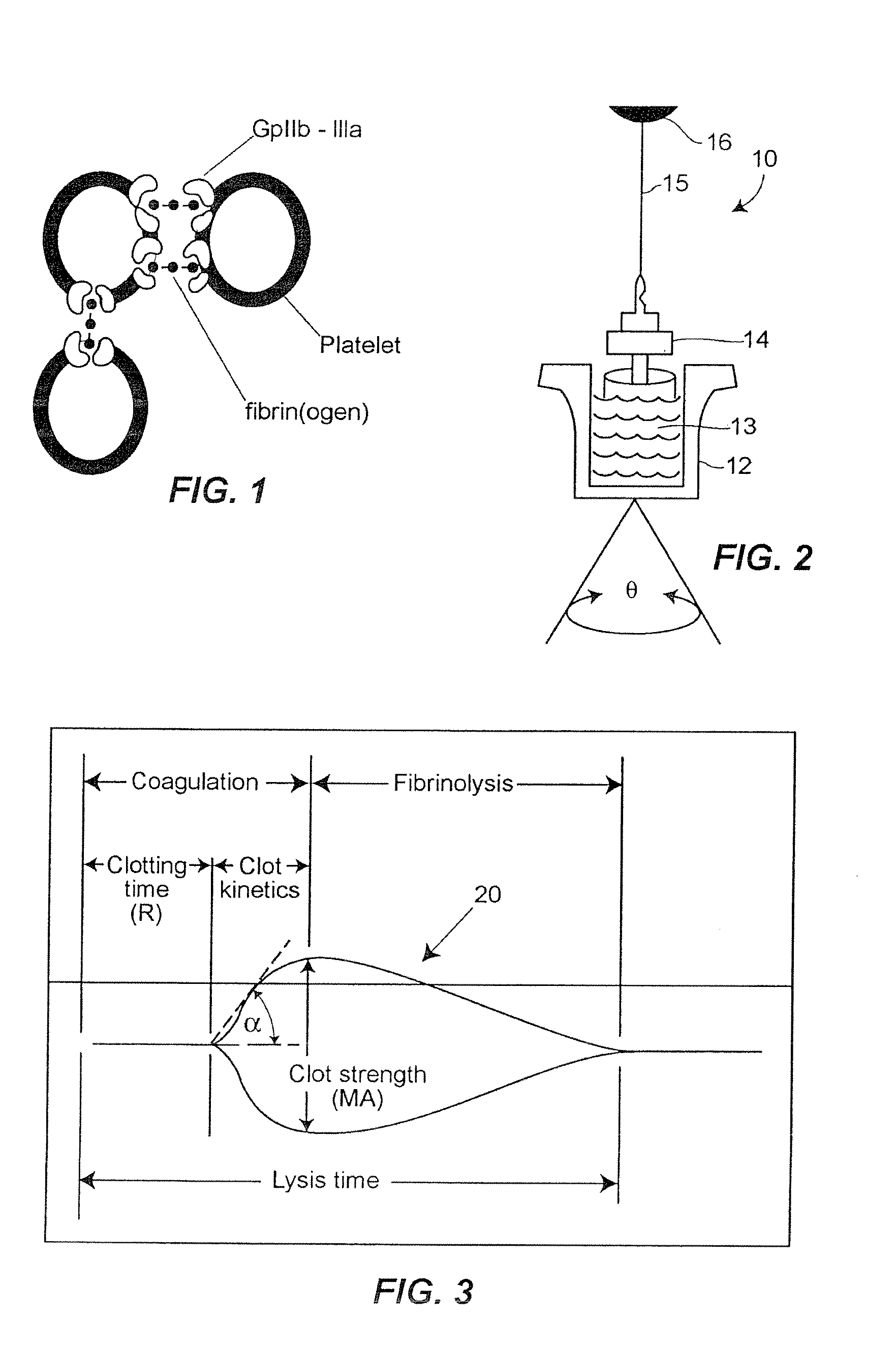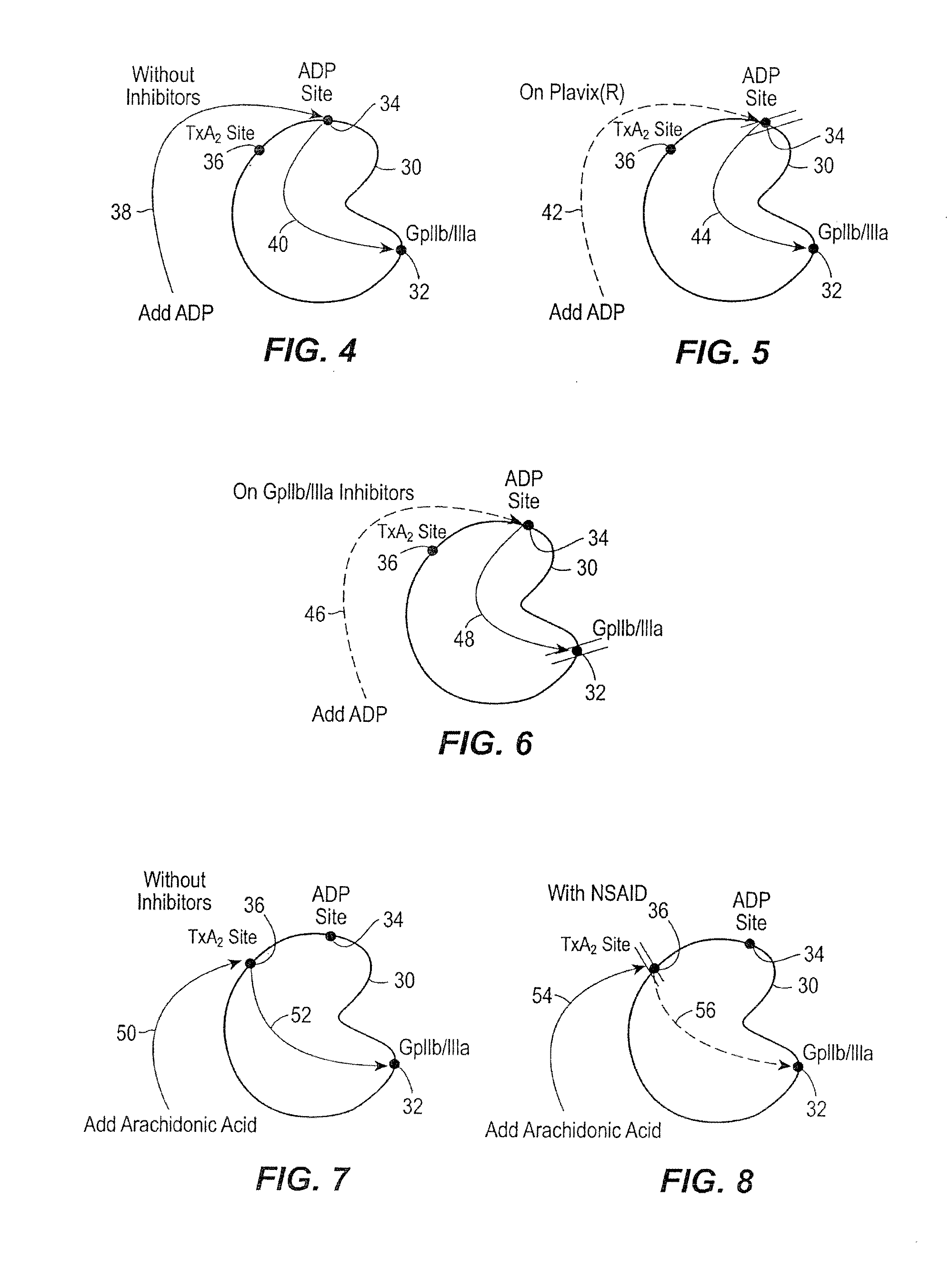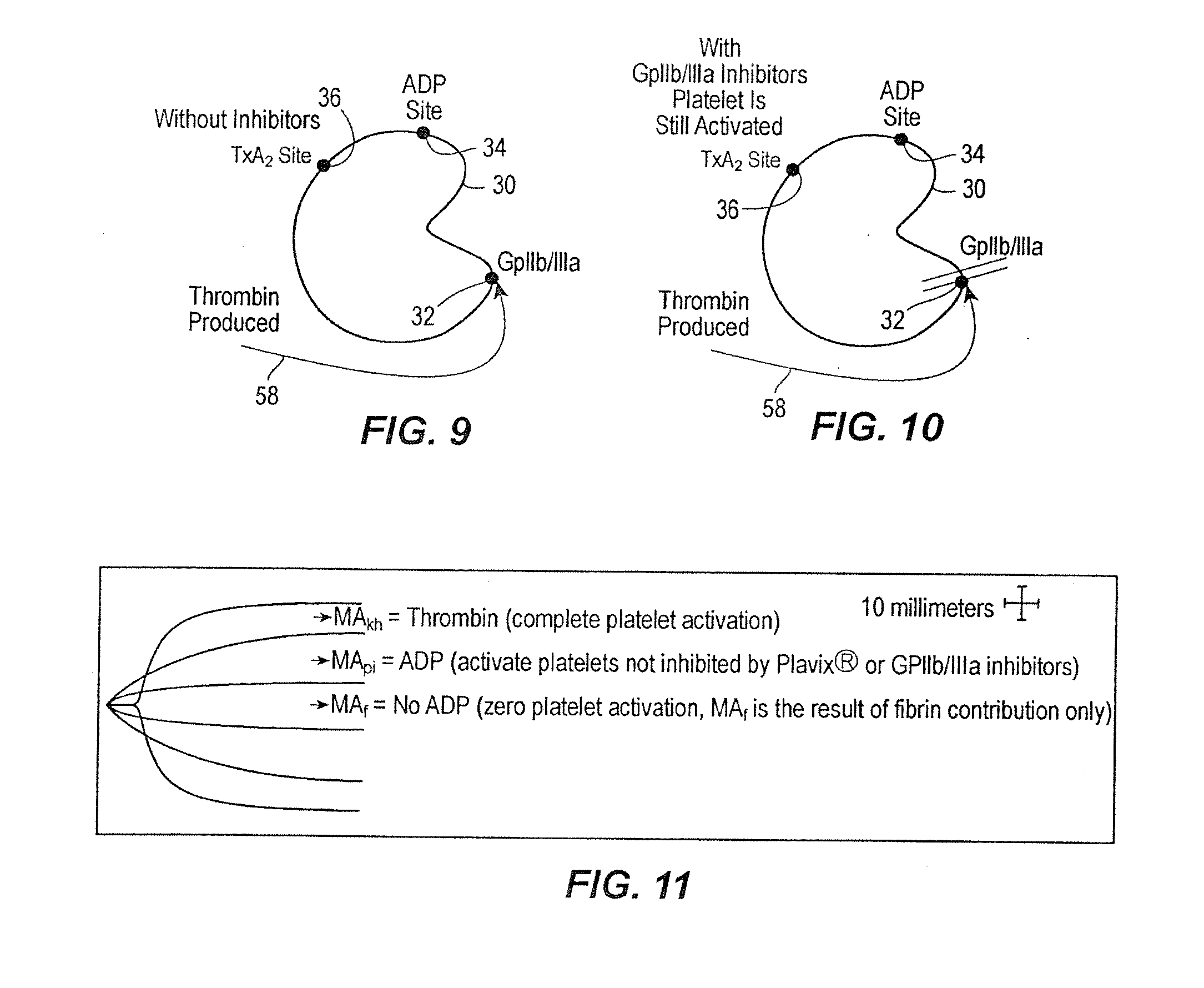Method of Evaluating Patient Hemostasis
a hemostasis and patient technology, applied in the field of protocols for monitoring patient hemostasis, can solve the problems of no rapid, reliable, quantitative, point-of-care test for monitoring therapeutic platelet blockade, and patient may remain at risk
- Summary
- Abstract
- Description
- Claims
- Application Information
AI Technical Summary
Problems solved by technology
Method used
Image
Examples
Embodiment Construction
[0025] In accordance with the preferred embodiments of the invention, a hemostasis analyzer, such as the Thrombelastograph® (TEG®) hemostasis analyzer available from Haemoscope Corp., Skokie, Ill., is utilized to measure continuously in real time, the hemostasis process from the initial fibrin formation, through platelet-fibrin GPIIb / IIIa bonding and lysis. While several specific anti-platelet agents are discussed herein in connection with the preferred embodiments of the invention, it will be appreciated the invention has application in connection with virtually any anti-platelet agents. Moreover, it will be further appreciated that the invention has application for measuring the efficacy of coagulation enhancing or platelet activating agents.
[0026] In accordance with the preferred embodiments of the invention, utilization of the hemostasis analyzer in accordance with the inventive protocol permits: confirmation of the attainment of therapeutic level of GPIIb / IIIa receptor blockad...
PUM
| Property | Measurement | Unit |
|---|---|---|
| time | aaaaa | aaaaa |
| blood clot strength | aaaaa | aaaaa |
| time | aaaaa | aaaaa |
Abstract
Description
Claims
Application Information
 Login to View More
Login to View More - R&D
- Intellectual Property
- Life Sciences
- Materials
- Tech Scout
- Unparalleled Data Quality
- Higher Quality Content
- 60% Fewer Hallucinations
Browse by: Latest US Patents, China's latest patents, Technical Efficacy Thesaurus, Application Domain, Technology Topic, Popular Technical Reports.
© 2025 PatSnap. All rights reserved.Legal|Privacy policy|Modern Slavery Act Transparency Statement|Sitemap|About US| Contact US: help@patsnap.com



